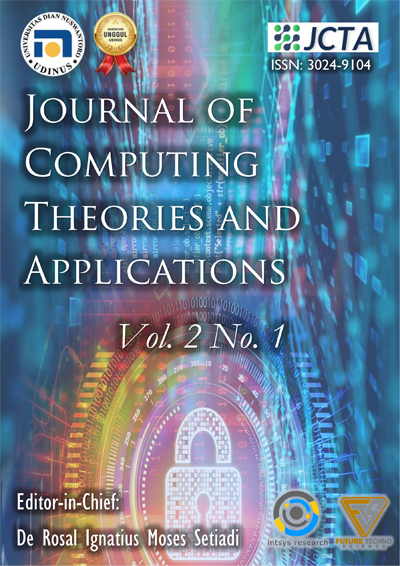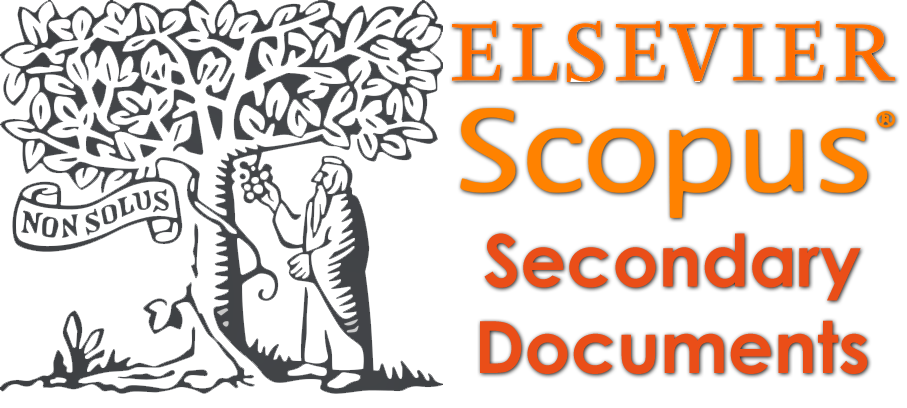Integrating Convolutional Neural Network and Weighted Moving Average for Enhanced Human Fall Detection Performance
DOI:
https://doi.org/10.62411/jcta.10428Keywords:
Accelerometer, Convolutional Neural Network, Gyroscope, Human Fall Classification, Weighted Moving AverageAbstract
This study proposes an approach for human fall classification utilizing a combination of Weighted Moving Average (WMA) and Convolutional Neural Networks (CNN) on the SisFall dataset. Falls among elderly individuals pose a significant public health concern, necessitating effective automated detection systems for timely intervention and assistance. The SisFall dataset, comprising accelerometer data collected during simulated falls and activities of daily living, serves as the basis for training and evaluating the proposed classification system. The proposed method begins by preprocessing accelerometer data using a WMA technique to enhance signal quality and reduce noise. Subsequently, the preprocessed data are fed into a CNN architecture optimized for feature extraction and fall classification. The CNN leverages its ability to automatically learn discriminative features from raw sensor data, enabling robust and accurate classification of fall and non-fall events. Experimental results demonstrate the efficacy of the proposed approach in accurately distinguishing between fall and non-fall activities, achieving high classification performance metrics such as accuracy, precision, recall, and F1-score. Comparative analysis with existing methods showcases the WMA-CNN hybrid approach's superiority in classification accuracy and robustness. Overall, the proposed methodology presents a promising framework for real-time human fall classification using sensor data, offering potential applications in wearable devices, ambient assisted living systems, and healthcare monitoring technologies to enhance safety and well-being among elderly individuals.References
R. Tanwar, N. Nandal, M. Zamani, and A. A. Manaf, “Pathway of Trends and Technologies in Fall Detection: A Systematic Review,” Healthcare, vol. 10, no. 1, p. 172, Jan. 2022, doi: 10.3390/healthcare10010172.
A. Bhattacharya and R. Vaughan, “Deep Learning Radar Design for Breathing and Fall Detection,” IEEE Sens. J., vol. 20, no. 9, pp. 5072–5085, May 2020, doi: 10.1109/JSEN.2020.2967100.
K. Saho, S. Hayashi, M. Tsuyama, L. Meng, and M. Masugi, “Machine Learning-Based Classification of Human Behaviors and Falls in Restroom via Dual Doppler Radar Measurements,” Sensors, vol. 22, no. 5, p. 1721, Feb. 2022, doi: 10.3390/s22051721.
L. Wang, M. Peng, and Q. Zhou, “Pre-Impact Fall Detection Based on Multi-Source CNN Ensemble,” IEEE Sens. J., vol. 20, no. 10, pp. 5442–5451, May 2020, doi: 10.1109/JSEN.2020.2970452.
C.-B. Lin, Z. Dong, W.-K. Kuan, and Y.-F. Huang, “A Framework for Fall Detection Based on OpenPose Skeleton and LSTM/GRU Models,” Appl. Sci., vol. 11, no. 1, p. 329, Dec. 2020, doi: 10.3390/app11010329.
Y. Luo, Z. Ou, T. Wan, and J.-M. Guo, “FastNet: Fast high-resolution network for human pose estimation,” Image Vis. Comput., vol. 119, p. 104390, Mar. 2022, doi: 10.1016/j.imavis.2022.104390.
M. T. Pourazad et al., “A Non-Intrusive Deep Learning Based Fall Detection Scheme Using Video Cameras,” in 2020 International Conference on Information Networking (ICOIN), Jan. 2020, pp. 443–446. doi: 10.1109/ICOIN48656.2020.9016455.
G. Sun and Z. Wang, “Fall detection algorithm for the elderly based on human posture estimation,” in 2020 Asia-Pacific Conference on Image Processing, Electronics and Computers (IPEC), Apr. 2020, pp. 172–176. doi: 10.1109/IPEC49694.2020.9114962.
X. Wang, J. Ellul, and G. Azzopardi, “Elderly Fall Detection Systems: A Literature Survey,” Front. Robot. AI, vol. 7, Jun. 2020, doi: 10.3389/frobt.2020.00071.
H. Liu et al., “Fast Human Pose Estimation in Compressed Videos,” IEEE Trans. Multimed., vol. 25, pp. 1390–1400, 2023, doi: 10.1109/TMM.2022.3141888.
E. Casilari, R. Lora-Rivera, and F. García-Lagos, “A Study on the Application of Convolutional Neural Networks to Fall Detection Evaluated with Multiple Public Datasets,” Sensors, vol. 20, no. 5, p. 1466, Mar. 2020, doi: 10.3390/s20051466.
H. Sadreazami, M. Bolic, and S. Rajan, “Fall Detection Using Standoff Radar-Based Sensing and Deep Convolutional Neural Network,” IEEE Trans. Circuits Syst. II Express Briefs, vol. 67, no. 1, pp. 197–201, Jan. 2020, doi: 10.1109/TCSII.2019.2904498.
K. P. Kamble, S. S. Sontakke, H. Donadkar, R. Poshattiwar, and A. Ananth, “Fall Alert: A Novel Approach to Detect Fall Using Base as a YOLO Object Detection,” in Advanced Machine Learning Technologies and Applications, 2021, pp. 15–24. doi: 10.1007/978-981-15-3383-9_2.
G. P. Reddy and M. K. Geetha, “Video based fall detection using deep convolutional neural network,” Eur. J. Mol. Clin. Med., vol. 7, no. 11, 2020.
M. Muaaz, A. Chelli, M. W. Gerdes, and M. Pätzold, “Wi-Sense: a passive human activity recognition system using Wi-Fi and convolutional neural network and its integration in health information systems,” Ann. Telecommun., vol. 77, no. 3–4, pp. 163–175, Apr. 2022, doi: 10.1007/s12243-021-00865-9.
J. Zhang, C. Wu, and Y. Wang, “Human Fall Detection Based on Body Posture Spatio-Temporal Evolution,” Sensors, vol. 20, no. 3, p. 946, Feb. 2020, doi: 10.3390/s20030946.
N. Zurbuchen, A. Wilde, and P. Bruegger, “A Machine Learning Multi-Class Approach for Fall Detection Systems Based on Wearable Sensors with a Study on Sampling Rates Selection,” Sensors, vol. 21, no. 3, p. 938, Jan. 2021, doi: 10.3390/s21030938.
CFI Team, “Weighted Moving Average (WMA),” corporatefinanceinstitute.com. https://corporatefinanceinstitute.com/resources/equities/weighted-moving-average-wma/ (accessed Mar. 23, 2024).
Y. LeCun, Y. Bengio, and G. Hinton, “Deep learning,” Nature, vol. 521, no. 7553, pp. 436–444, May 2015, doi: 10.1038/nature14539.
https://www.kaggle.com/datasets/moonesmobaraki/sisfall-dataset-with-lableadl-or-fall
Downloads
Published
How to Cite
Issue
Section
License
Copyright (c) 2024 Kyi Pyar

This work is licensed under a Creative Commons Attribution 4.0 International License.















